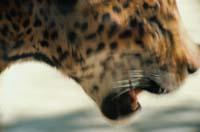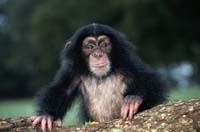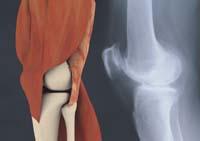We are born to run
2005/07/10 Galarraga Aiestaran, Ana - Elhuyar Zientzia

In theory, the human body is appropriate to run for a long time and not to run in the bulls. Moreover, a new theory holds that the body has its appearance of running on the long road. Apparently, the ancestors of men and women today were excellent runners, which has left a mark on the evolution of the body, from the joints of the legs to the appearance of the head.
Two American researchers have released this theory based on fossils and biomechanical studies. And it will not be such an indifferent theory, as it has been published in the prestigious scientific journal Nature.
It seems that the first men started running about two million years ago, when the ancestors had taken the step of going from the trees to the savannah. It seems that being able to run on the savanna brought him benefits. Consequently, natural selection opted for the characteristics that facilitated the race.
According to the researchers, this explains why today both men and women are able to make a marathon. The theory also helps to understand why other primates cannot run so far.
Comparison with other animals

Until now, scientists considered that men and women did not run very well, especially compared to other animals. Seeing how they unfolded in the sprint, the man was a mediocre runner. In fact, the fastest runners rarely travel ten meters per second. On the contrary, the cheetah runs thirty meters in a single second. In addition, running man consumes more energy than most mammals.
But if we look at how it unfolds on the long roads, the result is in favor of people. For example, the horse runs six meters in intense chopping per second, far surpassing the runners. Researchers of the new theory have no doubt that man is a humble sprinter, but on the long road does not adapt very badly to speed. And metabolism also helps you.

Why is it so good at long distance? What did a good bottom runner do? Researchers hypothesize that man is as good a runner as a result of his effort to find food.
Perhaps he had to compete with hyenas to get food. The hyena is also good in long-running races, and both species allegedly tried to get to where they killed some animal in the hope of collecting remains. Or maybe that's not the reason, but the man hunted his prey by tiring them. That is, he ran behind the prey for a long time, until the animal got tired. Then it was easy to hunt.
The best features for running
Regardless of the reason, being a good run on the long road was an advantage and throughout evolution, through natural selection, man managed to have a number of characteristics that helped to run. An example is the elastic tendon of Akiles and the hard joints of the legs. The tendency to lose hair and the ability to sweat are also beneficial, both characteristics help to lose the heat generated by running.

Another aspect that researchers mention is the ability to balance. Many animals maintain balance thanks to the semicircular canals of the inner ear. These channels are filled with a fluid that measures acceleration. These structures are especially important both in our species, the Homo sapiens, and in the Homo erectus that lived until 400,000 years ago. And that helps to run because it requires a lot of coordination.
On the other hand, during physical effort, the human being tends to breathe through the mouth. On the contrary, the rest of primates receive it through the nose. But if the human being did the same during the race, he could not take the necessary oxygen, so it is beneficial to breathe through the mouth.
That the ass is straight and out is also due to the ability to run! Researchers have measured the activity of the major gluteus during the race and march. The result is clarifying: walking doesn't have much activity, but running puts the muscle on fire, gives it all.
Researchers have gone further and suggested that having a large brain may be due to the ability to run. After all, the existence of good corridors contributed to a diet rich in protein and varied, without which the brain would not have developed so much. However, researchers themselves recognize that more research is needed to confirm this.
Published in 7K.




